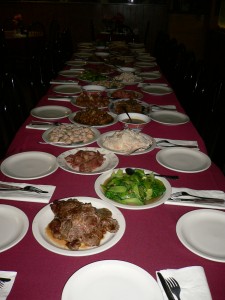After a couple of months of curiosity/speculation, I finally caved in today and tried the taqueria in my neighborhood. I hesitated in trying it earlier due to my friend’s warning that the said taqueria had “very bland burritos”. I was looking around on Yelp! and saw some less-than-stellar reviews on how bland the burritos were, too, so I was trying to avoid trying it.
Still, my friend told me that I should try it, just to have my own opinion about it. So I did, I had a burrito from the taqueria, and…it was okay. It didn’t seem extremely bland to me, yet it also didn’t seem super delicious either. Which got me thinking….
How exactly do people measure what’s “really good” and “really bad”?
It’s probably an easy answer, that people just judge by what they know, what they have tasted beforehand. Still, it’s hard to really measure something when you don’t have anything to measure it against.
Take for instance, my first time trying Burmese food a couple of months ago.
Burmese food is similar to most other Asian cuisines, yet there are some distinct things about it as well, in terms of flavor and local specialties. I went to one of the super-popular Burmese restaurants in the city and tried one of their “specialty dishes”. I walked out, feeling “Oh, it was okay.” It didn’t make me cringe, nor did it make me feel like “Gee whiz, I LOVE Burmese food!” It’s probably because, I didn’t have much to measure it against. It would have been unfair for me to compare it to, say, Thai cuisine; even if the two cuisines are similar, there are still some things different about the two where a comparison would not be fair at all.
So how do I go about deciding whether one restaurant is better than the other?
In many ways, I guess I am still rather sheltered in terms of what foods I consume. I’m open to any type of food and am always willing to try anything new. However, I guess when it comes to deciding which place has the “best” food, it’s hard for me to say.
Which brings me back to the origin…I have only tried three taquerias in San Francisco so far. All three have been decent for me: nothing stood out as being blatantly horrible, but nothing stood out as being really great, either. I have trouble figuring out what I should be looking for in terms of greatness. Any suggestions?

